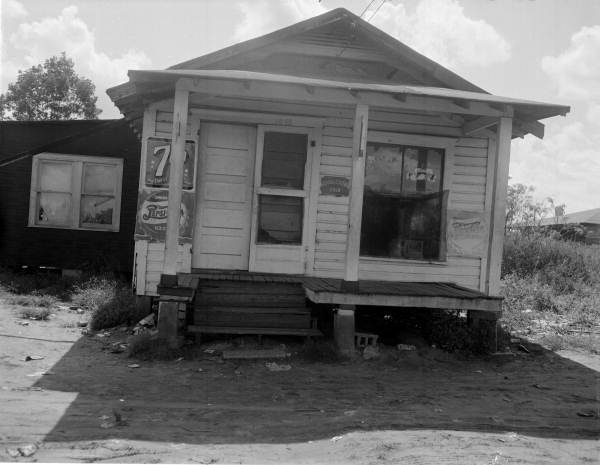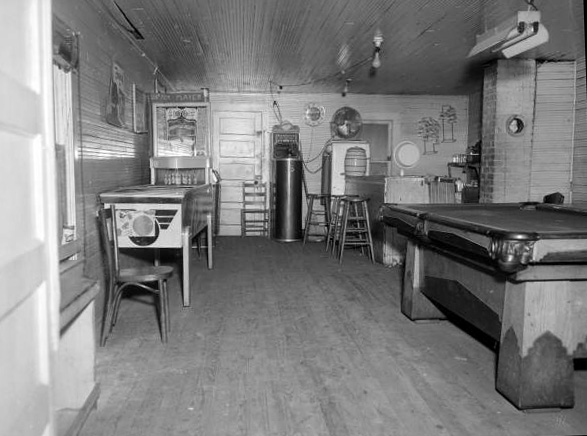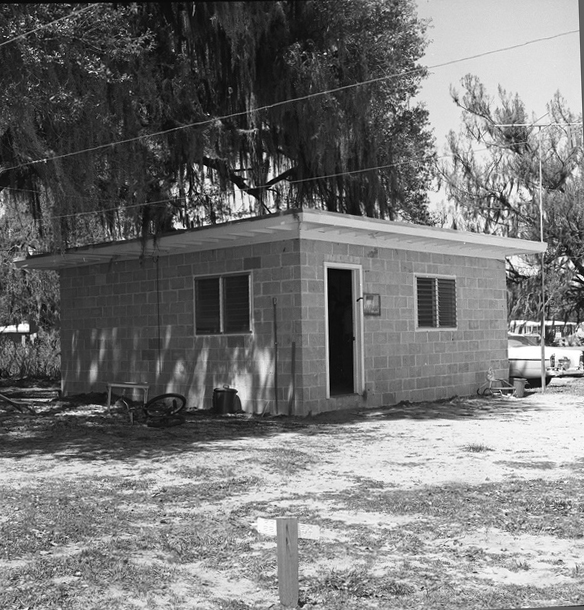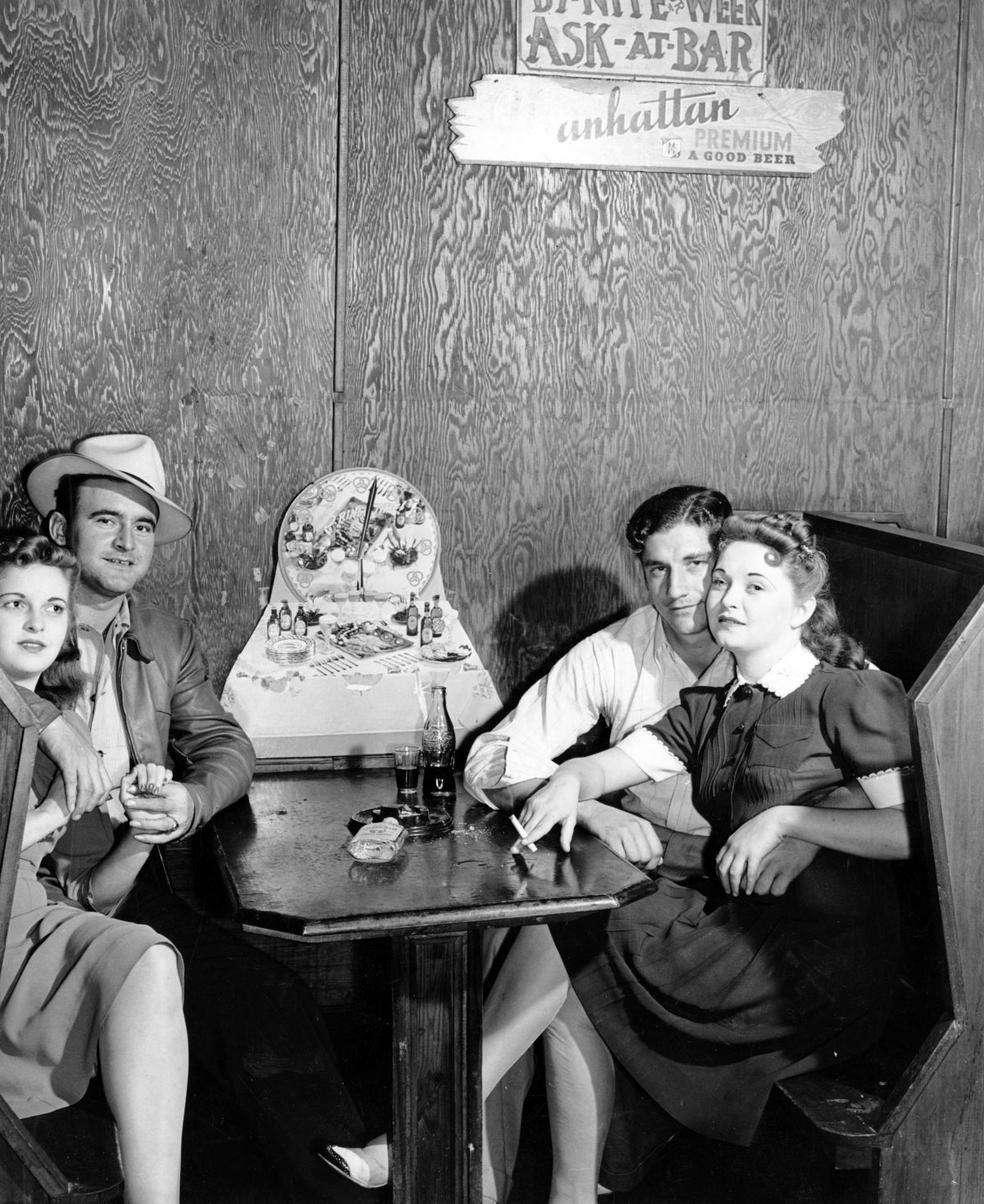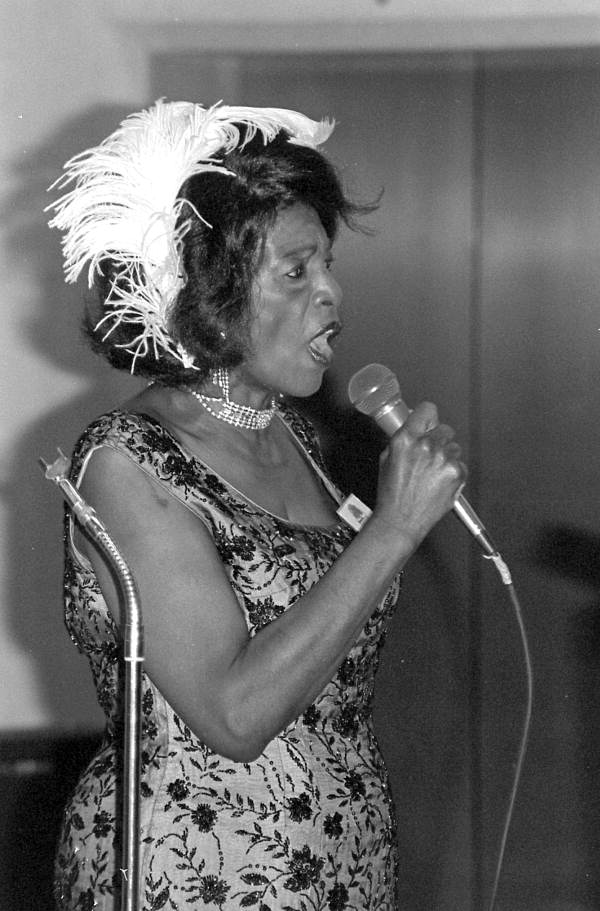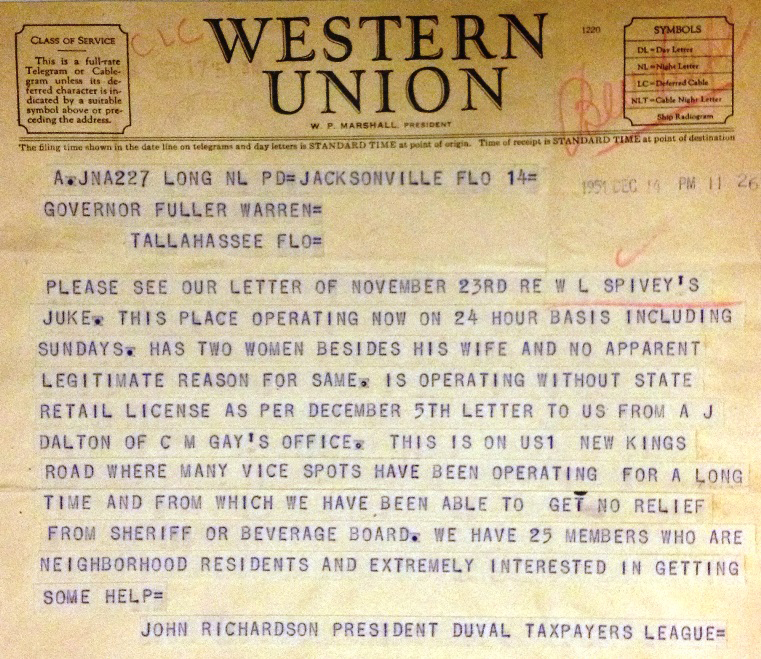Description of previous item
Description of next item
Florida's Juke Joints
Published May 5, 2014 by Florida Memory
In the 1930s, 40s, and 50s, if you had plenty of money and a city’s worth of entertainment at your disposal, you might have chosen to spend your Friday evening at the movies, a night club, or a high-quality restaurant. If, however, you were in rural Florida and looking for something a little less formal and a heap less expensive, you were more likely to drive out to the local juke joint.
The name “juke joint” was given to the hundreds of dive bars similar to the one pictured above that once appeared all over the state during the early to mid-20th century. They were especially prevalent in rural areas, near sawmills, turpentine camps, and other places with lots of everyday folks who might want to relax a bit without having to get too dressed up to do it.
The origin of the term “juke” is somewhat in dispute, but in Stetson Kennedy’s Palmetto Country, he explains that African-Americans first developed these establishments, since they were barred from saloons and other entertainment venues operated by whites. After Prohibition ended in 1933, however, juke joints for whites began to appear as well.
As newspaper accounts and former patrons often explain, juke joints were distinguished by their relaxed, laissez-faire atmosphere. Here, once away from downtown and out from under the all-seeing gaze of the public eye, both men and women could let their hair down a bit and enjoy a few drinks, loud music, and the sort of lowbrow entertainment that might have sent their mothers into a fainting spell.
Depending on the place and time, the music came either from a jukebox or a live performance, and there was usually someplace to dance. The kind of music played depended on the source and the crowd. If the joint had a jukebox, the crowd might select anything from Glenn Miller’s “In the Mood” to Frank Sinatra’s “I’ll Be Seeing You” – whatever was popular at the time. If live music was available, blues, country, or jazz might be the order of the day. Blues music was particularly popular in juke joints operated for and by African-Americans, featuring songs with titles like “Mistreatin-Mama,” “Rattlesnake Daddy,” and Drinkin My Blues Away.” A number of Florida’s blues and folk personalities, such as Marie Buggs and “Washboard” Bill Cooke, got their start playing in juke joints.
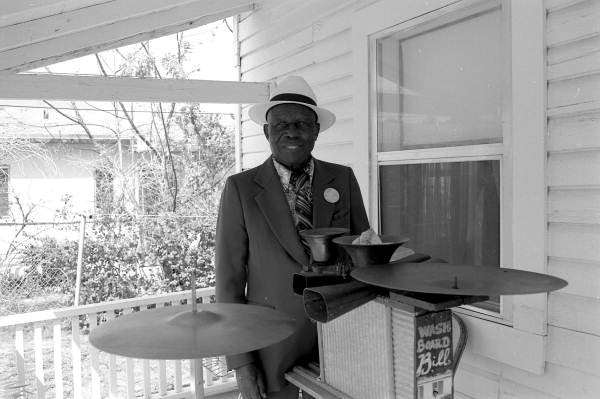
William “Washboard Bill” Cooke with cymbals and his signature washboard. During Cooke’s early childhood, his mother operated a juke joint, where the young Cooke was first exposed to music and dance (photo 1993).
The names of these watering holes reflected their no-frills character. Most were simply named for their owners, such as Benny’s Place near Brooksville, and Baker Bryan’s, just south of the Florida-Georgia border on U.S. 1 near Hilliard. Others were named more creatively, or at least nicknamed creatively, as was the case with the Bucket of Blood at Jug Island in Taylor County, and the Mystery Ship near Sarasota. The signs that hung in some of these establishments were as colorful as the names. Most were designed to ward off some of the bad behavior that often occurred, including fighting, swearing, and stretching credit just a little too far. Below is a list Stetson Kennedy typed in the 1930s of some of the juke joint signs he encountered while traveling the state as a folklorist for the Florida Federal Writers’ Project.
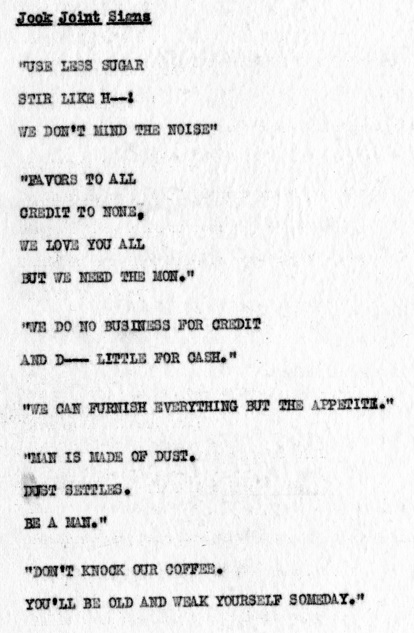
A page from Stetson Kennedy’s notes on juke joints. This and a variety of other resources relating to the Florida Federal Writers’ Program are available in Series 1585 (Stetson Kennedy Folklife Collection) at the State Archives of Florida.
While weary laborers and the younger crowd in general found juke joints to be a convenient form of relaxation, parents, teachers, the clergy, and law enforcement often considered them a nuisance at best and an ominous threat to the morals of the community at worst. The correspondence of Florida’s governors contains numerous examples of telegrams, letters, and resolutions calling for some kind of action to counteract the bad influence of these establishments on youth and workers. Local and state law enforcement officials did raid and shut down juke joints from time to time, usually on the suspicion of prostitution or selling liquor illegally.
Despite the trouble associated with juke joints, the concept was popular, and at one time even attracted the attention of Hollywood. In 1942, Warner Brothers released “Juke Girl,” featuring Ann Sheridan as a Florida juke joint hostess, along with Alan Hale, Richard Whorf, and Ronald Reagan. Yes, that Ronald Reagan.
Times have changed, and most of the juke joints of old have changed considerably or shut down entirely. This is not to say, of course, that cutting loose and having a good time ever went out of style. But “juking” the way it once was done in the seedier but livelier places of Florida back in those days is fast becoming the stuff of history.
Do you have photographs of a Florida juke joint? Were you ever a participant in the festivities? Tell us about it when you share this article on Facebook or Twitter.
Cite This Article
Chicago Manual of Style
(17th Edition)Florida Memory. "Florida's Juke Joints." Floridiana, 2014. https://www.floridamemory.com/items/show/295174.
MLA
(9th Edition)Florida Memory. "Florida's Juke Joints." Floridiana, 2014, https://www.floridamemory.com/items/show/295174. Accessed December 25, 2025.
APA
(7th Edition)Florida Memory. (2014, May 5). Florida's Juke Joints. Floridiana. Retrieved from https://www.floridamemory.com/items/show/295174

 Listen: The Folk Program
Listen: The Folk Program